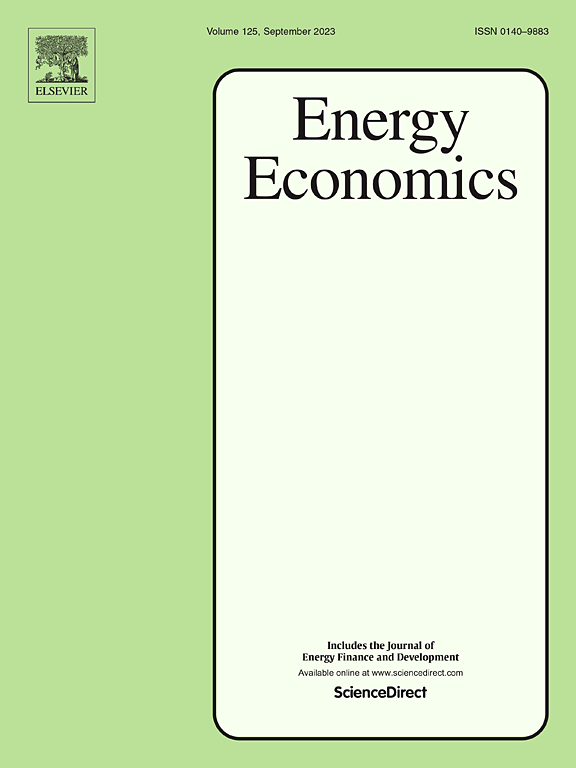核电厂退役成本估算中的突发事件
IF 13.6
2区 经济学
Q1 ECONOMICS
引用次数: 0
摘要
人们对商业核电站的退役成本进行了数百次估计。没有标准的方法来进行这些估算,特别是估算偶然性(一种风险溢价),以覆盖项目执行期间的意外成本。在其他项目特征中,遵循成本工程指南估算偶然性需要考虑(1)成本估算的概率分布,(2)成本估算的方差,(3)估算者假设的包含最终成本的准确度范围,(4)估算者对最终成本将在规定的准确度范围内的信心程度,以及(5)成本估算使用者的风险厌恶程度。方差(或标准偏差)可以使用蒙特卡罗技术计算,该技术通常假设个体活动成本之间没有相关性。由于组合效应的影响,综合活动成本的模拟标准差小于核退役成本估算指南所建议的标准差。当假设活动之间的相关性为非零时,模拟标准差更为合理。这一结论是通过将退役作业承包商EnergySolutions提出的估算意外事件和活动成本的方法应用于威斯康星州Kewaunee核电站的退役,而该公司在完成了包括Zion 1和Zion 2在内的其他四台核电机组的净化和拆除后,正在对其他四台美国核电机组进行退役。EnergySolutions的退役成本可能接近美国核电站的最高水平。本文章由计算机程序翻译,如有差异,请以英文原文为准。
Contingency in nuclear power plant decommissioning cost estimation
Hundreds of estimates have been made of decommissioning costs for commercial nuclear power plants. There is no standard method for making these estimates, particularly for estimating contingency, a type of risk premium, to cover unexpected costs during project execution. Following cost engineering guidelines for estimating contingency requires, among other project characteristics, consideration of (1) the cost estimate's probability distribution, (2) the cost estimate's variance, (3) the estimator's assumed accuracy range that will contain the final cost, (4) the estimator's level of confidence that the final cost will be in the stated accuracy range, and (5) the cost estimate user's risk aversion. The variance (or standard deviation) can be calculated using Monte Carlo techniques, which generally assume no correlation between individual activity costs. Because of portfolio effects, the simulated standard deviation of the aggregated activity cost is smaller than what would be suggested by nuclear decommissioning cost estimating guidelines. The simulated standard deviation is more reasonable when correlations are assumed to be non-zero between activities. This conclusion is shown by applying the proposed method for estimating contingency to activity costs estimated by the decommissioning operations contractor EnergySolutions to decommission the Kewaunee nuclear power plant in Wisconsin, while it is decommissioning four other US nuclear power units after it completed the decontamination and demolition of four other units, including Zion 1&2. EnergySolutions could be approaching Nth-of-a-Kind decommissioning costs for US nuclear power plants.
求助全文
通过发布文献求助,成功后即可免费获取论文全文。
去求助
来源期刊

Energy Economics
ECONOMICS-
CiteScore
18.60
自引率
12.50%
发文量
524
期刊介绍:
Energy Economics is a field journal that focuses on energy economics and energy finance. It covers various themes including the exploitation, conversion, and use of energy, markets for energy commodities and derivatives, regulation and taxation, forecasting, environment and climate, international trade, development, and monetary policy. The journal welcomes contributions that utilize diverse methods such as experiments, surveys, econometrics, decomposition, simulation models, equilibrium models, optimization models, and analytical models. It publishes a combination of papers employing different methods to explore a wide range of topics. The journal's replication policy encourages the submission of replication studies, wherein researchers reproduce and extend the key results of original studies while explaining any differences. Energy Economics is indexed and abstracted in several databases including Environmental Abstracts, Fuel and Energy Abstracts, Social Sciences Citation Index, GEOBASE, Social & Behavioral Sciences, Journal of Economic Literature, INSPEC, and more.
 求助内容:
求助内容: 应助结果提醒方式:
应助结果提醒方式:


